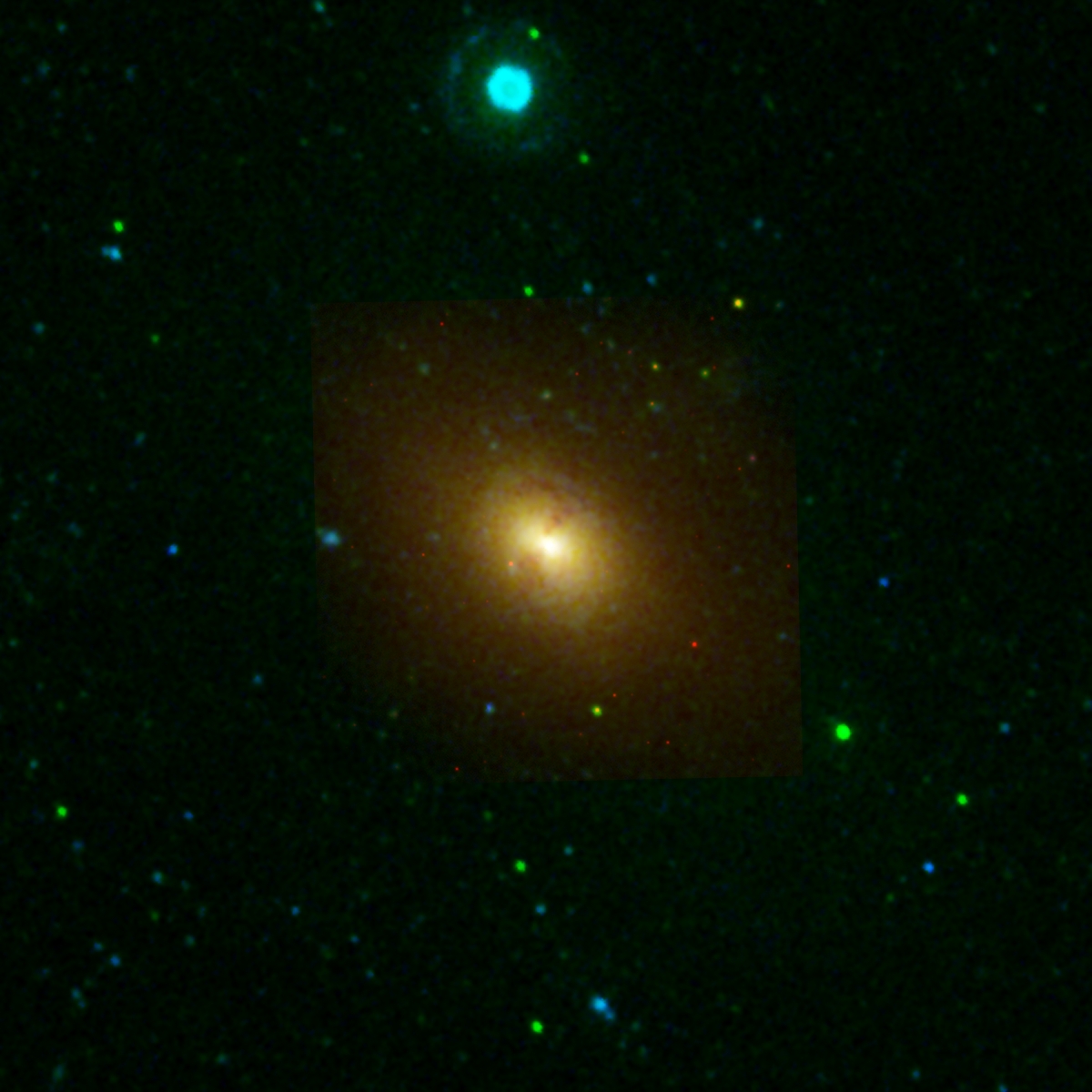
|
||||||


| Chapter 4: |
Section 4.3.3 Merging Galaxy: NGC 1316:
NGC 1316 is Sa pec (merger?) galaxy and is one of the best examples of a galaxy undergoing a merger event. It is located in the outskirts of the Fornax cluster at 16.9 Mpc. The smaller barred spiral galaxy NGC 1317 is north of NGC 1316 with a 200 km s-1 larger velocity. It is not clear whether NGC 1317 is interacting with the larger NGC 1316, however UV observations of NGC 1317 show a circumnuclear ring centered on the barred nucleus. Such rings may be associated with the bar, or by a gravitational impulse possibly from NGC 1316.
The optical properties of NGC 1316 have been extensively investigated by Schweizer (1980, 1981). The galaxy possesses an r1/4 (elliptical-like) surface brightness profile (see Section 4.3.5), that indicates dynamical relaxation1, yet at large radii, tidal tails, shells, ripples and loops (all signatures of ongoing interactions and merger events) are seen. It is an active galaxy of LINER type. Fornax A, the associated radio source, shows two lobes of emission either side of the optical galaxy.
An optical and radio image of NGC 1316 is shown in Figure 1.21.
A secondary classification of A is adopted.
1Dynamical relaxation means that orbits are stable and ordered.

|
||||||
HST FOC imaging (Fabbiano, Fassnacht and Trinchieri 1994) detect a UV-bright, unresolved nucleus.
HST WFPC observations (Shaya et al. 1996) find that the star cluster population is quite normal, in contrast to that seen in another merger galaxy, NGC 1275 (Holtzman et al. 1992). Mackie and Fabbiano (1998) present deep CTIO Curtis Schmidt optical images and archival ROSAT PSPC images. An elliptical optical light model is subtracted revealing extensive low surface brightness tidal tails, shells and loops. X-ray emission is cospatial with two tidal tails and X-ray spectra for one of the regions indicate soft emission, indicative of 5 x 106 K gas. The discovery of a large amount of warm, 104 K gas (denoted EELR in Figure 4.99) projected inside the larger tidal tail (L1; Schweizer 1980) suggests it is related to a recent, ~0.5 Gyr old, merger event. Grillmair et al. (1999) describe the luminosity and B-I color distribution of globular clusters using WFPC2 data. They suggest that these clusters are more like Galactic old open clusters than typical globular clusters in early-type galaxies.
Horellou et al. (2001) present CO and HI observations. CO is detected in the nuclear region, whilst HI was detected, associated with EELR (Mackie and Fabbiano 1998) and the giant HII region SH2 (Schweizer 1980).
The radio source, Fornax A, PKS 0320-374 associated with the galaxy has a double lobe structure separated by ~33' (Ekers et al. 1983) and exists outside the extent of the optical galaxy. A steep spectrum radio core with dual-opposing jets (Geldzahler and Fomalont 1984) exists within 1' radius.
Polarization has been discussed in Section 2.9.5. The filamentary structure in the left (eastern) lobe is due to depolarization occurring in the lobe. The well defined channel across the north of the western lobe shows depolarization caused when the position angle changes markedly.